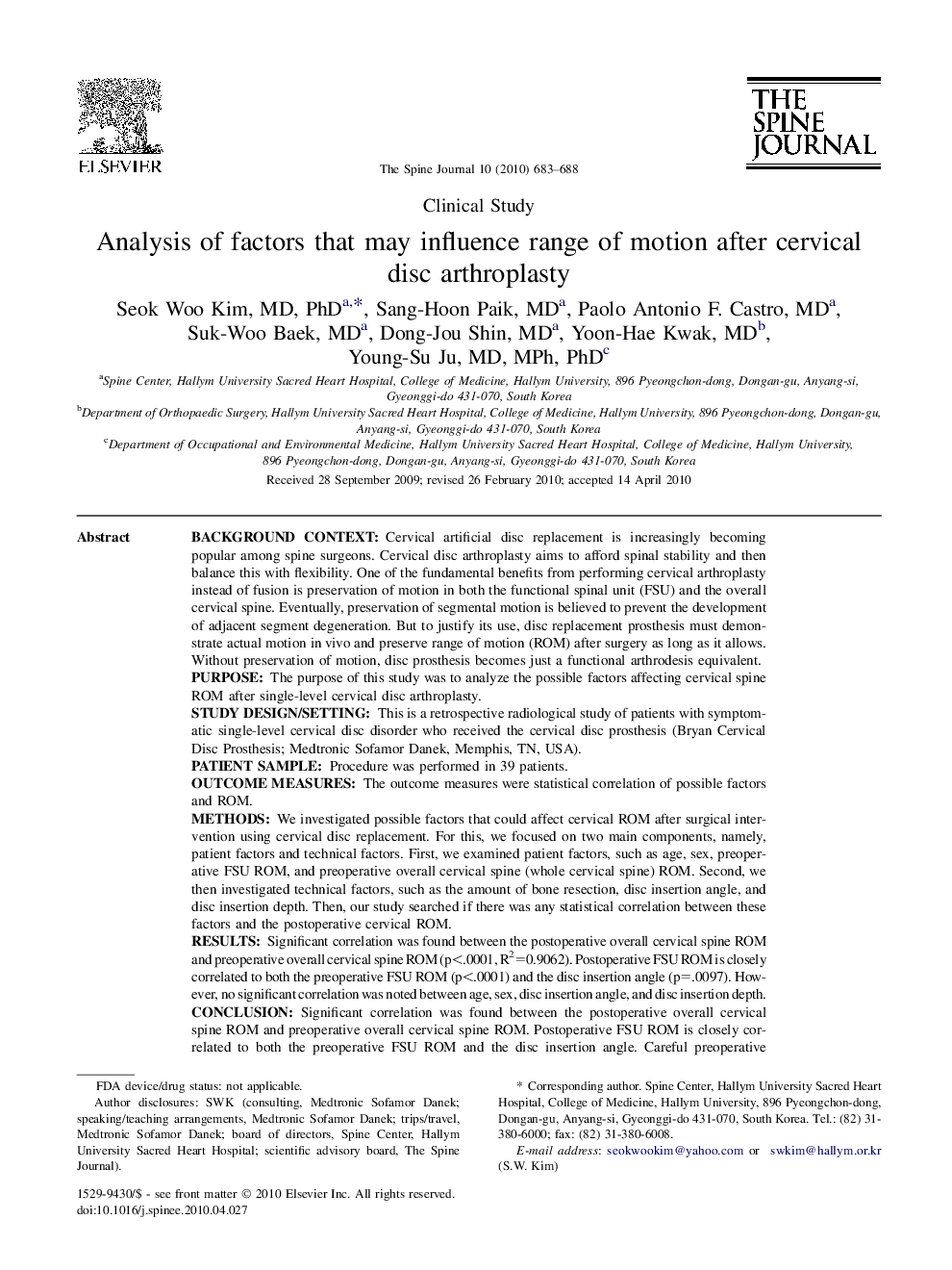| Article ID | Journal | Published Year | Pages | File Type |
|---|---|---|---|---|
| 4098671 | The Spine Journal | 2010 | 6 Pages |
Background contextCervical artificial disc replacement is increasingly becoming popular among spine surgeons. Cervical disc arthroplasty aims to afford spinal stability and then balance this with flexibility. One of the fundamental benefits from performing cervical arthroplasty instead of fusion is preservation of motion in both the functional spinal unit (FSU) and the overall cervical spine. Eventually, preservation of segmental motion is believed to prevent the development of adjacent segment degeneration. But to justify its use, disc replacement prosthesis must demonstrate actual motion in vivo and preserve range of motion (ROM) after surgery as long as it allows. Without preservation of motion, disc prosthesis becomes just a functional arthrodesis equivalent.PurposeThe purpose of this study was to analyze the possible factors affecting cervical spine ROM after single-level cervical disc arthroplasty.Study design/settingThis is a retrospective radiological study of patients with symptomatic single-level cervical disc disorder who received the cervical disc prosthesis (Bryan Cervical Disc Prosthesis; Medtronic Sofamor Danek, Memphis, TN, USA).Patient sampleProcedure was performed in 39 patients.Outcome measuresThe outcome measures were statistical correlation of possible factors and ROM.MethodsWe investigated possible factors that could affect cervical ROM after surgical intervention using cervical disc replacement. For this, we focused on two main components, namely, patient factors and technical factors. First, we examined patient factors, such as age, sex, preoperative FSU ROM, and preoperative overall cervical spine (whole cervical spine) ROM. Second, we then investigated technical factors, such as the amount of bone resection, disc insertion angle, and disc insertion depth. Then, our study searched if there was any statistical correlation between these factors and the postoperative cervical ROM.ResultsSignificant correlation was found between the postoperative overall cervical spine ROM and preoperative overall cervical spine ROM (p<.0001, R2=0.9062). Postoperative FSU ROM is closely correlated to both the preoperative FSU ROM (p<.0001) and the disc insertion angle (p=.0097). However, no significant correlation was noted between age, sex, disc insertion angle, and disc insertion depth.ConclusionSignificant correlation was found between the postoperative overall cervical spine ROM and preoperative overall cervical spine ROM. Postoperative FSU ROM is closely correlated to both the preoperative FSU ROM and the disc insertion angle. Careful preoperative evaluation of the patient's radiographs and meticulous surgical technique during the surgical procedure could aid in achieving the goals and benefits of cervical disc arthroplasty.
